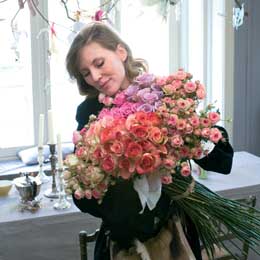| 
St Valentine's Day
Facts
and figures from the Flowers & Plants Association On
14th February:
British people spend around £50 million on flowers
and plants, 99% of which is spent on flowers.
Sales of fresh flowers
increase by well over half, on average sales levels.
Over 3 million
people - both women and men - give fresh flowers.
Around 90% of
the day's flowers are bought
by men.
Around 5% of the day's flowers are bought for men -
and this figure is growing.
Well over 9 million red roses are given in
the UK.
The majority of roses sold in the UK are flown in from Colombia,
Holland, India, Israel, Kenya, Zimbabwe, and the Channel Isles, though some are
grown in the UK.
Worldwide over 55 million roses are traded on
this one day alone.
If quoting figures please credit the Flowers &
Plants Association/TNS Sofres (Figures from Valentine's Day 2008)
Worldwide demand on just one day:
Russians, Japanese and Americans are
also avid buyers of roses; and many European countries spend three times what
we in the UK do on fresh flowers.
Roses
are traditionally a certain shade of bright scarlet red, though darker reds are
becoming more popular. The flowerbuds should be just ready to open. If the flowers
have opened over-fully, or are still tight in green bud, then they are not saleable.
Weather and light conditions can also affect their development.
Roses
are a fresh, living, changing product, and cannot be stockpiled in advance.
This means a huge global demand for this
one product, in a very short timeframe, which inevitably causes supply problems,
and consequently higher prices than during the rest of the year. Demand simply
outstrips supply.
Red roses are also
not a uniform product - as living things they vary enormously: short or long stemmed,
large or small headed, and of course, differing varieties and qualities. Prices
can therefore vary greatly.
Valentine's
Day Flowers from Interflora - the flower experts

back |






